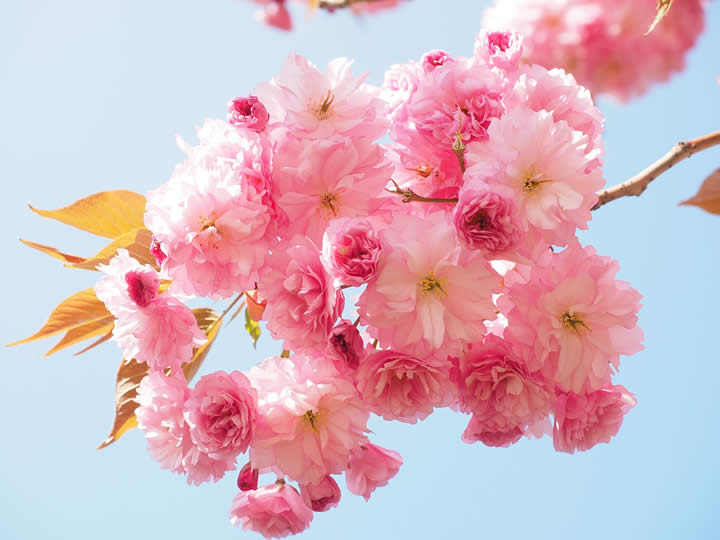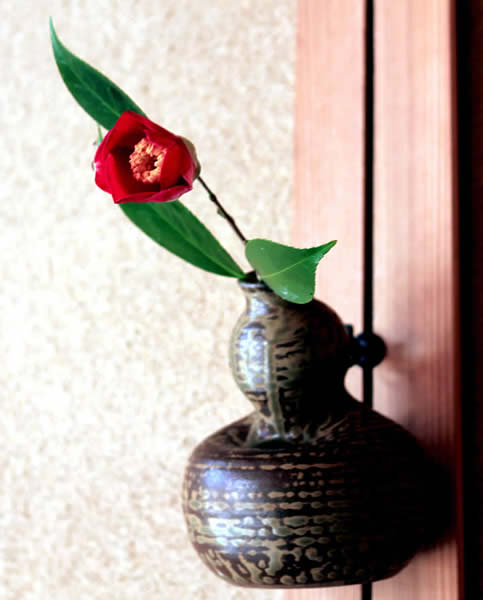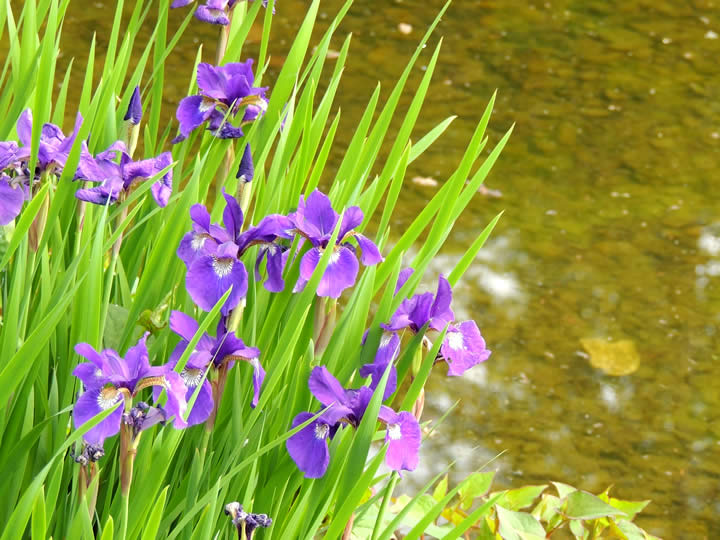Humans all over the world have been known to appreciate the beauty of plants and flowers since time immemorial. It can be anything as simple as a tulip or lily; flowers have been used to decorate homes, be given as gifts or offerings, be used for their aromatic fragrance, and to symbolize different ideas. Not all flowers are the same; they have different variations and shapes. This dynamic appeal that comes with flowers calls for a wide array of meanings that could be attached to them, and that people use them for.

While other parts of the world have different takes on what each flower has to say, Japan has its own take on what their flowers represent. They have their own version of the language for their flowers; ascribing codes, emotions and direct concepts to each species or arrangement that thus speak for the human offeror.
More About the Language of Flowers
Because Japan possesses all four seasons, it is abundant when it comes to different species of vibrant flowers. With globalization came the import of other flower species from foreign countries. While local Japanese flowers have their own meanings, so do the local species. An example of a couple of species native to Japan is the Tsubaki, (otherwise known as Camellia), which grows during spring, and the Asagao (known in English as the Morning Glory) which grows during summer.
In Japan, the language of flowers is called “Hanakotoba”. There is a list of around 58 flowers that have very clear and concise meanings connected to them when it comes to the Hanakotoba. Flower languages and depictions from other countries may not be entirely the same. Consider the previously mentioned Tsubaki. In Japanese terms, it symbolizes the concept of waiting. In western terms, however, it depicts excellence.
What is Behind the Symbol of a Flower in Japan?
The roots behind using flowers as symbolism are linked to Japan’s rich ties with Buddhism. Buddhism teaches of appreciating the present moment, which is heightened when one is in touch with nature. When you gaze intently at a flower, sometimes you are drawn toward it in a way that is indescribably alluring. The spontaneity of beauty and peace that comes with appreciating that flower is the central core of Buddhism – and thus, one use of flowers as a representation of meaning was born.
As for its uses throughout history, you’ll notice how often flowers appear in so much of Japanese tradition when you sift through old literature, paintings, and even clothes. Whether they were painted on kimonos a hundred years ago, or continue to make an appearance on a popular manga series, they were (and still are) a symbolic staple in Japanese culture. That kimono, for example. The choice of flower used to design it could indicate a woman’s rank in society, or even her availability when it comes to marriage.
Meaningfulness and intent get even deeper when certain flowers are put together to create a beautiful “Ikebana”. “Ikebana” refers to the Japanese art of arranging flowers. It’s not as easy as choosing which flowers would go well together and put them in a pot. Ikebana uses the lines from a scalene triangle as a basis for design and takes into consideration the shape and form of the whole piece. This art has been performed as early as the 7th century and grew to have several schools teaching how to perfect this art form.

Different Meanings of Certain Flower Species in Japan
There are dozens of flowers that carry with them inherent meanings in the Japanese culture, some of them more popular than others. If you’re thinking of expressing a certain idea or emotion to someone you know, you may use this a guide to help you in arranging your bouquet or picking out the perfect flower choice.
The Meaning of The Lotus Flower in Japan

The Lotus Flower, scientifically known as “Nelumbo nucifera”, symbolizes enlightenment and purity. It’s also called “Renge” in Romaji. So why enlightenment? If you look closely at how a lotus flower functions, you’ll see parallels with how humans grow spiritually. See, the Lotus flower is usually found in murky, dirty ponds. Although its surroundings are considered less than ideal to thrive in, it successfully pulls through, blossoming into a beautiful, pure flower. This is like when people face dark times and struggle through problems, only to emerge as more spiritual, learned, and wise.
The Lotus flower also has roots that reach all the way deep down in these murky waters; but somehow manage to create something beautiful and clean out of the dirt, thus embodying purity. “Kanrensetsu” is the celebration of lotus flowers during early July; people come together and ride boats to view them at their full opening.
The Meaning of the Sakura Flower in Japan
Also, known as the Cherry Blossom, this is one of the most revered flowers in Japan. It is considered one of the two national flowers of Japan. The scientific name for this tree is “Prunus serrulata”. Tourists from all over the world flock to Japan during spring (usually late March until early April) to catch them bloom, as it is truly a wondrous site to see. The festival that celebrates this flower is called “hanami” – literally meaning viewing flowers.

The Sakura Flower is a symbol many things. Among them are affection, kindness, love, gentleness, chastity as well as the concept “wabi-sabi”. It can also mean the beauty of heart, as well as accomplishment. Wabi-sabi is the idea that everything is temporary, and that there is a beauty to be found in imperfection. The impermanence that is connoted form Wabi-sabi is also symbolized through the fall of the cherry blossoms. Though the flowers are gorgeously pastel, their beauty and existence are fleeting – and so is life.
The Meaning of the Iris Flower in Japan

Next is the Iris flower - from dark purplish variants to their more pale, pastel violet hues, these are used to represent loyalty, having a noble heart, and good news. They are found in many different colors, shapes, and sizes all over the world, but the kind you’d find in Japan come from the subgenus “Limniris”, and are named “Beardless Rhizome Iris”. In Japanese, though, they call it “ayame”. You may give these flowers to someone who is celebrating his or her birthday or is expecting something great to happen soon.
The Meaning of the Peony Flower in Japan
It may not have grown in Japan on its own (it was imported from China by Buddhist Monks early on) but the Peony is well-loved. It is called “Botan” in Japanese. It symbolizes many positive things – the most popular of them is bravery, but other representations include nobility, honor, respect, good fortune, and wealth. They were once used as an ingredient in medicine. They are sometimes used to adorn receptions in weddings to promote fortune for the newlyweds.

As with most flowers, the Peony has several types. The Peony you’d find in Japan can have either a double or single row of large petals, in the middle of which are found thick staminodes. You can see the carpels, and may or may not store its pollen around its rims. They used to be planted around court gardens in Tokyo, Kyoto, Shimane, and Niigata and gained popularity during the Edo period. The peony comes in a variation of colors, from shades of pink, purple, and even bright white.
The Meaning of the Lily Flower in Japan
There are several lilies; their meanings change depending on their color. White lilies usually symbolize chastity and purity. Those that are orange depict revenge and/or hatred. Spider lilies stand for sweetness, tiger lilies mean fortune and wealth. Lastly, the Red Spider Lily means that you will never be reunited, or that someone has left and won’t come back.
Meanings of Other Miscellaneous Flowers in Terms of Hanakotoba
The native Tsubaki flower of Japan can mean “the perfect love”, and can also represent humility. Then again, if that isn’t enough to convey an emotion, you can literally say “you have captivated me” by giving your love a bouquet of “Momo” or peach flowers. The complex Chrysanthemum or “Kiku” that blooms in autumn can mean nobleness, longevity, and can also mean you’re asking the person you’re giving it to, to trust you. Another beautiful and lively flower is the Ume. It is special because it only grows during the winter time (November to February). It represents having a pure heart, and utter elegance.
Instead of emoting by writing a letter, do so instead with a bouquet of different flowers that you want to express to your lover. Mix, match, and remember their different meanings so when you present it to him/her, you can explain it – or perhaps to keep an air of mystery, leave them to find out for themselves.
Not Only In Japan Does The Color Of A Flower Determine Its Possible Meanings
Notice how the color of a flower often works harmoniously with its meaning? They do – though not entirely strictly. They work similarly to the colors of human chakras. When combined with the meaning of the flower itself, choosing the right color for your bouquet or single flower can mean a lot. Here are the colors, and the symbols they generally indicate.
Starting off with warmer colors; red usually indicates love, passion, desire, and admiration. Often, a rose would be given to the one you romantically love. In other, non-romantic instances, red can also represent courage. Orange is a happy color. It indicates enthusiasm and excitement. Because it’s most akin to the hue of the sun, it symbolizes energy, growth, and warmth. Yellow flowers can mean wholesomeness, intelligence, honesty, and friendship. Pink flowers show gentleness (note: the Sakura), innocence, and can also indicate love interest.
As for cooler colors, green is usually connected with health and renewal. It’s the color that is related mostly to nature; giving off the sense of harvest and abundance. Blue flowers are something you’d give to someone in the name of peace and clarity. It can also convey inspiration, dreams, and tranquility. Violet flowers point towards spirituality, faith, nobility, and the divine. Indigo represents royalty, tradition, depth, dignity. Lastly, white represents purity, perfection, and innocence.
